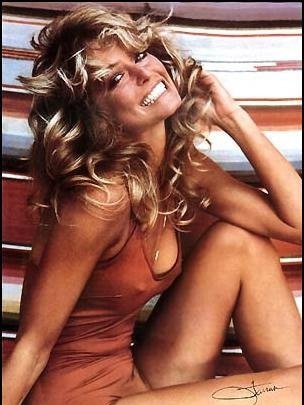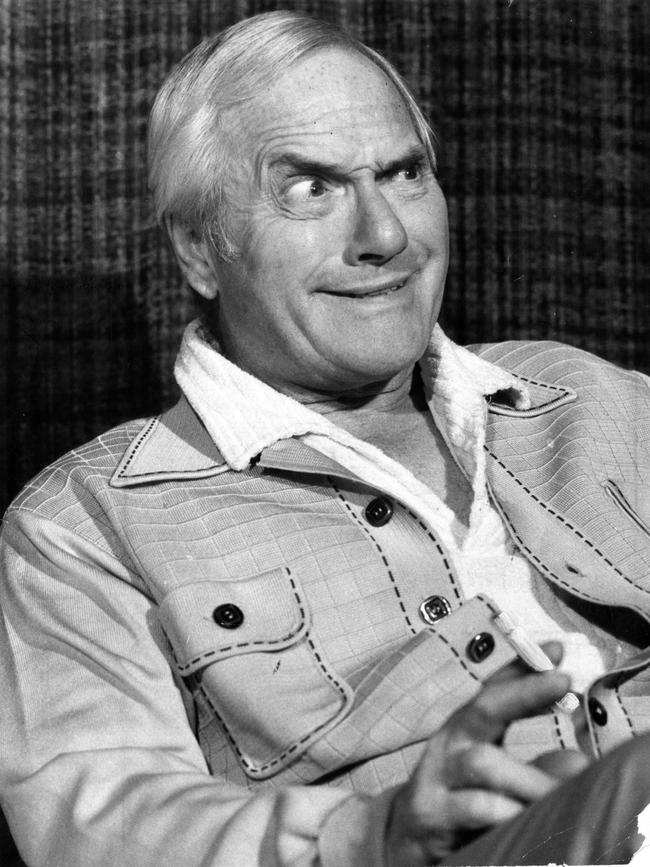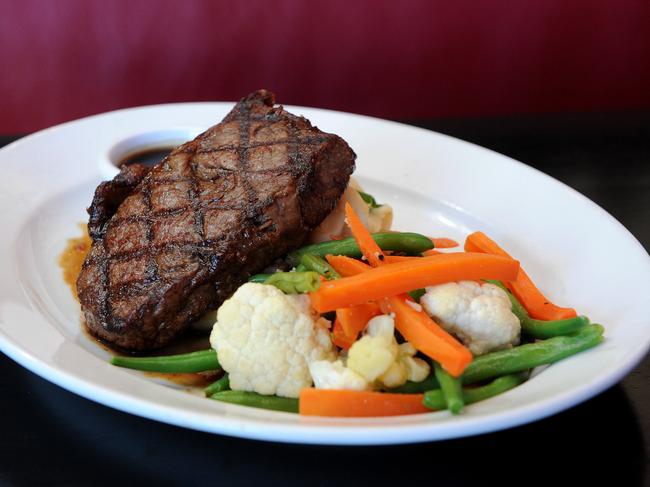Want a steak or even a burger? The diet police are watching
All I want is a steak and fries, and maybe an ice cream. But with all the conflicting advice around today, there’s already too much on my plate.
Just last week I unexpectedly found myself in a house devoid of spouse and children, a rare evening cut free from all familial responsibilities, a night that opened out into delirious, joyful infinity.
No bin duties, dog-feeding timetables, school homework supervision, cleaning the kitchen, stacking the dishwasher, monitoring children’s screen time, ironing uniforms in advance of morning and setting an alarm for the bus run.
In every male, no matter how deeply concealed, no matter how neglected, is a bachelor switch. The bachelor switch may have been dormant for decades, but it keenly senses an opportunity. I see it as an old, indestructible bakelite knob – for the youngsters, bakelite was an old-fashioned, once widely used form of durable plastic – that magically appears when a bachelor window opens. The switch is effortlessly flicked despite a paucity of use.
So I expertly flicked mine and settled in for dinner – a home-cooked T-bone steak and french fries lashed with salt flakes, a chilled can of soda followed up by a chocolate Cornetto.
I was back in the 1970s, baby. I peered out the front window of the house to the front driveway half-expecting to see my gleaming teal-blue two-door Ford Escort Ghia waiting to be taken for a spin. In the back of my head I could hear the faint refrain of Video Killed the Radio Star by the Buggles.
I cleaned up the kitchen, tried to find The Dick Emery Show (Oh, you are awful but I like you!) on the streaming platforms, failed, went to bed and slipped into a deep and glorious dream-filled sleep, occasionally interrupted by Farrah Fawcett-Majors.


Shortly after the family returned the next day I was confronted by my wife in the kitchen. She was holding up a clear plastic sandwich bag and in it the gnawed remains of my T-bone that she’d retrieved from the bin. The Food Police were back. And not just the Food Police but their crack detectives, sealing the steak bone like evidence from a murder scene.
She pinched a corner of the bag and held it up. The bag swayed.
“New Year’s diet?”
“Yes,” I said. “Paleo.”
I had tried the paleo diet. Or I think it was the paleo diet. Wasn’t that the one where you could eat as much meat as you liked? Wasn’t it the caveperson (no prehistoric sexism here) diet, where you replicated what our hunter-gatherer Neanderthal forebears ate? Fruit, veg and a Brontosaurus burger anyone?
There are so many diets flying around at the moment I’ve lost track. Across time they all seem to blend together. All meat. No meat. Real plants. Fake plants. Eat all day. Eat during a six-hour window.
I reckon I’ve burnt more calories trying to adhere to the exacting rules of these diets than courtesy of the diets themselves.
It brought to mind that quote from singer Dolly Parton: “I tried every diet in the book. I tried some that weren’t in the book. I tried eating the book. It tasted better than most of the diets.”
I wanted to tell the Food Police that the T-bone/french fries/Cornetto lapse wasn’t my fault. My inner-bachelor Neanderthal was to blame. Besides, the Neanderthal’s common sense was confused because he’d stumbled across a series of clips of Lynda Carter as Wonder Woman on YouTube while searching for Dick Emery.
“Paleo,” I reasserted.
“And where might cave folk have got the french fries?” the Food Police asked.
“Perhaps they were French cave people?”
“Let alone a Cornetto …”
So many diets, so little time.
I didn’t mind the intermittent fasting. No food outside the six-hour eating corridor. Everything scrupulously weighed on those tiny electronic scales. Everything down to the precise gram.
It worked. The weight dropped off. So long as you didn’t mind the rampant stomach growls louder than a bassoon in the woodwind section of a pit orchestra. Or the frequent dizzy spells. Or the persistent desire to actually eat a part of yourself, you were so delirious with hunger.
No, the fasting was good. But there was far too much maths. The fasting diet was also in a waltz with the keto diet, whereby you aimed to enter a state of ketosis where your body started feeding on itself.
But who had time to do all those sums?
Then the Food Police tried to tease me with something called the flexitarian diet. It sounded like an eating regime for gymnasts.
This was the Claytons vegetarian diet. And again for the unantiquated, Claytons was a non-alcoholic whisky promoted in the late 1970s (and way ahead of the current non-alcoholic beverages trend) that became a byword for something cheap, nasty and fake.
To be a flexitarian or fauxtarian, therefore, was to absorb all the great benefits of a vegetarian diet but to still eat meat in moderation. In other words, a semi-vegetarian diet. Which, to my humble mind, is about as oxymoronic as it gets given the primary principle of vegetarianism is to avoid meat at all costs. Or, as the vicar said to the parishioner, you can’t be half pregnant.

Still, flexitarianism or demi-vegetarianism or reducetarianism, as it’s known, is very popular with the Dutch. Which may say more about the Dutch than the diet.
The flexible diet has been supported by the EAT-Lancet Commission, a non-profit collective of scientists and food experts from a variety of fields including farming and climate change looking at sustainable global food systems and healthy diets into the future.
In short, how can the planet feed billions in a sustainable way? Eating less meat would be a good start, it says. And why not? However, dropping all the brain-teasing names and simply calling it what it is – the meat and two veg diet – may ease the linguistic confusion.
But how can any normal person know which dietary path to take when our global celebrities are telling us so many different things?
Kim Kardashian is a proponent of plant-based diets. Reese Witherspoon is a big intermittent faster. Uma Thurman practises paleo. And the great Bruce Springsteen is a student of perhaps my favourite name for a diet – OMAD, or one meal a day. I will never listen to his song Hungry Heart in the same way again.
Now The New York Times has tried to resurrect a two-decade-old diet that everyone seems to have forgotten about – DASH, or dietary approaches to stop hypertension. It’s not surprising everyone has ignored it given it sounds like something your doctor might scrawl in his case notes.
DASH – a diet heavy with whole grains, fruit, nuts and vegetables – surfaced 20 years ago and vanished from view. While it sounds like a mishmash of other trendy diets, it’s front-loaded with calcium, magnesium and fibre, and missing sugar, saturated fats and sodium. It’s aimed squarely at high blood pressure and a healthy heart.
The good news? It permits five servings of “sweets” a week.
I remain confused, having become so self-conscious courtesy of the Food Police’s constant monitoring. I now wonder if people are peering over my shoulder in the supermarket and judging the contents of my basket. Given everything has a swish name these days, I’m calling this condition shopping basket shaming syndrome or SBSS.
I defer as usual to a close friend who has tried every diet ever concocted and appears, finally, to have settled on a weight-loss regime that works for him. He has trimmed down.
“You look half a million bucks,” I tell him. “What’s the diet this time?”
“The BBP diet,” he says confidently.
“The BBP?”
“Handed down from the grandmother.”
“Let me guess – the boysenberry, blackberry and pomegranate diet?”
“No. The bread-and-butter plate diet. At dinner, eat only what you can fit on the smaller plate.”
My first thoughts?
Eye fillet. And a mini-Cornetto.





They are here, there and everywhere at the moment, and they’re coming to get you.